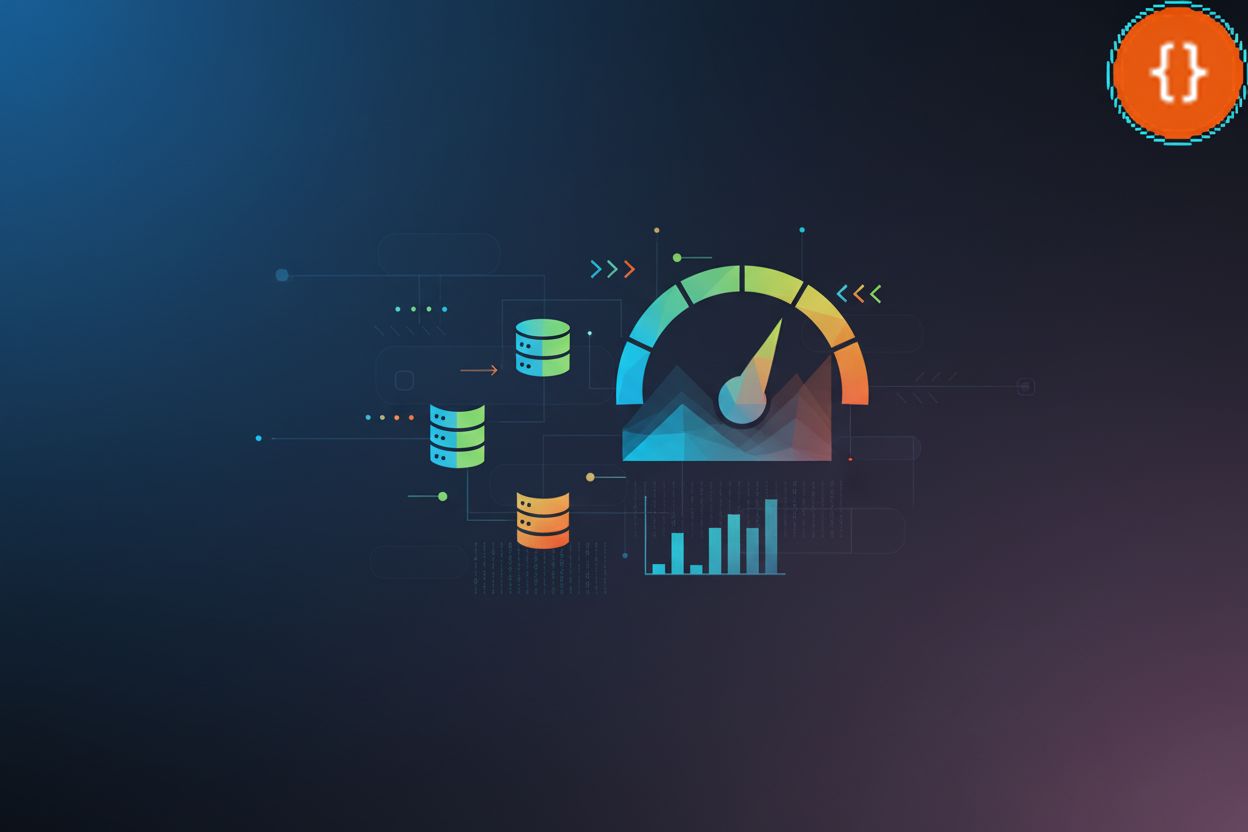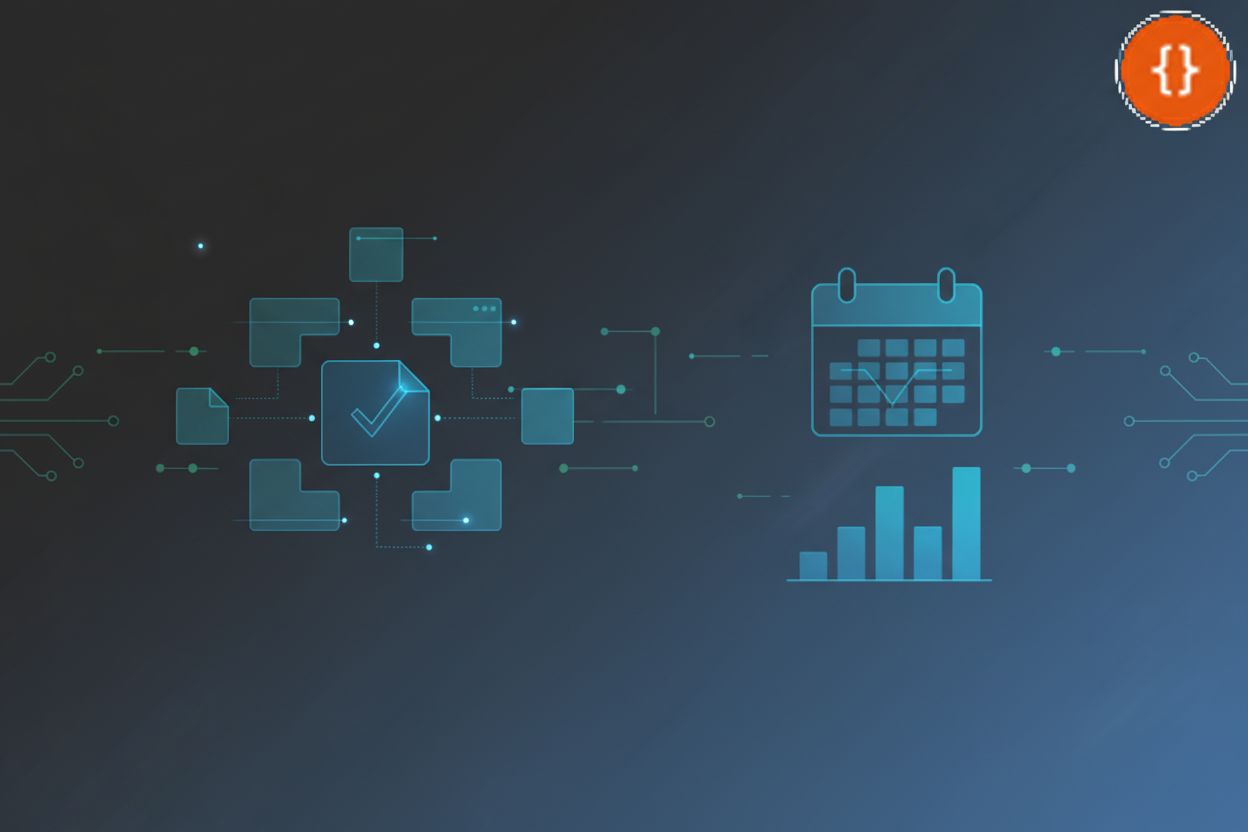Screening and Characterization of APIs
TL;DR
Introduction to API Screening and Characterization
Ever wondered if your api is really doing what it's supposed to? It's not enough to just assume everything's working perfectly. That’s where api screening and characterization comes into play. Think of it as a health check for your apis, making sure they're fit for purpose before you even start the serious testing.
It's about understanding api behavior before diving into rigorous testing. You wouldn't run a marathon without stretching first, right? Similarly, api screening is our 'stretching' phase, preparing us for the more rigorous testing ahead. Screening helps you get a feel for how the api functions, its quirks, and potential weak spots.
Screening and characterization has a big impact on performance, security, and functionality. Like, if you don't know what kind of data an api endpoint should be returning, how can you possibly test if it's returning the right data?
The cool thing is that you get the benefits of early identification of potential issues. Catching problems early—like, "hey, this endpoint is responding in 5 seconds instead of 200ms"—saves you headaches (and money) down the road.
The initial assessment steps are all about getting the lay of the land. This means understanding the api's structure and capabilities. What endpoints are available? What authentication methods are used? It’s like reading the instruction manual before assembling furniture.
Next, its important to identifying key api endpoints. Not all endpoints are created equal. Some handle critical functions, like processing payments in a finance app or updating inventory in a retail system. Focus your initial efforts on these.
Don't forget about preliminary security checks. Are there any obvious vulnerabilities, like exposed api keys or lack of input validation? A quick scan can reveal low-hanging fruit that hackers might exploit. For instance, exposed api keys can lead to unauthorized access, and a lack of input validation can allow malicious data to be injected.
Detailed examination of api functionalities is where you really dig in. What does each endpoint actually do? What parameters does it accept? What are the expected response codes?
Mapping request/response patterns helps you understand the flow of data. What does a typical request look like? What does the corresponding response contain? This is crucial for creating effective test cases.
Finally, documenting data types and structures ensures everyone's on the same page. Is that field an integer or a string? Is that array nested or flat? Clear documentation minimizes confusion and reduces the risk of errors.
Think of it like this: api Screening is a quick check, while characterization dives deeper. Next up, we'll look at the methods for performing these tasks.
Methods for API Screening
Okay, so you've got an api. Now, how do you make sure it's not a total mess before you start hammering on it with tests? That's where screening methods come in, and trust me, there's more than one way to skin this cat.
First up, good ol' manual inspection. Don't underestimate the power of human eyeballs!
- Start by reviewing api documentation. Yeah, I know, documentation. But seriously, a well-documented api is a happy api. Look for clear explanations of endpoints, parameters, and data formats. If the documentation is garbage—well, that's your first red flag.
- Next, analyze request and response samples. Grab some sample requests and responses (hopefully, the documentation includes these!). See how the data flows. Are the responses well-formed? Does the data actually make sense? Like, is the "price" field actually a number?
- Finally, identifying potential vulnerabilities by doing a quick security check. Look for things like exposed api keys, lack of input validation, or overly permissive access controls. It's surprising what you can find with a little manual poking around. For instance, exposed api keys can lead to unauthorized access, and a lack of input validation can allow malicious data to be injected.
While manual inspection is valuable, for larger or more complex APIs, leveraging automated tools can significantly speed up the process.
- Using tools for endpoint discovery is a huge time-saver. Tools like Postman or Insomnia can automatically discover endpoints and generate basic requests. This helps you quickly map out the api's landscape.
- Automated security scanning can catch common vulnerabilities early. Tools like OWASP ZAP or Burp Suite can automatically scan your api for things like SQL injection, cross-site scripting (xss), and other security flaws.
- Performance testing scripts can give you a quick sense of how your api performs under load. Even a simple script that sends a few requests per second can reveal bottlenecks or performance issues.
Contract testing is like making sure everyone reads the same rulebook.
- Validating api contracts (e.g., swagger, openapi) ensures that your api adheres to its defined specification. These contracts describe the structure and behavior of your api, and contract testing tools can automatically check if your api is following the rules.
- Ensuring adherence to specifications helps prevent integration issues down the road. If your api contract says that an endpoint should return a json object with a "name" field, contract testing will verify that it actually does.
- Detecting inconsistencies between the api and its contract early is key. Catching these issues early prevents headaches and wasted time later in the development cycle.
Don't wanna spend a ton of cash just to do a quick check? i get it!
- Utilize APIFiddler's Free Options for initial screening. It's a super approachable way to get started without any commitment.
- Quickly test api endpoints without registration. Seriously, no account needed. Just plug in the url and go. It's great when you need answers fast.
- Identify basic functionality and connectivity issues. Like, does the endpoint even respond? Can you actually connect to it? It's perfect for those preliminary checks.
So, you've got your methods. What's next? Well, now you gotta pick the right tools for the job and put these techniques into practice.
API Characterization Techniques
Ever wondered what makes one API tick differently than another? It's not just about if they work, but how they work. Api characterization techniques helps us get down to the nitty-gritty!
Functional characterization is like understanding the api's dna. It's all about mapping out what each endpoint actually does and how they relate to each other.
- Mapping api functionalities to business requirements means making sure each endpoint is tied to a real-world need. For example, in a healthcare app, does the
/getPatientDataendpoint actually retrieve the correct patient information needed by doctors? It's about tracing the connection from code to customer value. - Identifying dependencies between api endpoints is crucial for understanding the api's architecture. If updating a user's profile via
/updateProfilealso triggers a call to/sendNotification, you need to know that. Otherwise, you might end up with unexpected side effects. This knowledge is crucial for understanding the ripple effects of changes and for designing comprehensive test cases. - Validating data flows ensures that data moves correctly through the api. Does the data transformed during the flow follow the expected structure and data type? Like, if a retail api is supposed to convert currencies, is it doing it accurately?
Performance characterization is all about speed and efficiency. No one likes a slow api!
- Measuring response times under various load conditions is key to ensuring a smooth user experience. How does the api perform when 10 users are hitting it versus 1,000? This helps you understand its scalability.
- Identifying performance bottlenecks helps you pinpoint the weak links in the chain. Is it the database queries? The network latency? The code itself? Finding these bottlenecks allows you to optimize performance. This often involves profiling code, analyzing database query logs, and monitoring network traffic.
- Analyzing resource utilization tells you how efficiently the api is using system resources. Is it hogging cpu? Memory? Disk i/o? High resource utilization can lead to performance issues and even crashes.
Security characterization is about finding vulnerabilities before the bad guys do. Nobody wants a data breach on their hands!
- Identifying potential security vulnerabilities involves looking for common weaknesses like sql injection, cross-site scripting (xss), and insecure authentication. It's like checking the locks on your doors and windows.
- Analyzing authentication and authorization mechanisms ensures that only authorized users can access sensitive data. Are you really sure that only admins can delete user accounts?
- Testing for common attack vectors involves simulating real-world attacks to see how the api responds. Can someone bypass authentication by manipulating headers? Can they crash the api by sending malformed requests?
Don't wanna break the bank while figuring out your api's limits? APIFiddler has you covered!
- Leverage APIFiddler's Free Performance & Load Testing to characterize API performance. It's a super accessible way to stress-test your api without spending a dime.
- Simulate various load conditions to identify bottlenecks. See how it handles a sudden spike in traffic. Does it buckle under pressure, or does it hold steady?
- Analyze response times and resource utilization under stress. Get a clear picture of how your api behaves when pushed to its limits.
Characterizing your API is like giving it a full diagnostic workup, so you can be confident in its health and security. Next, we'll look at how to document your findings.
Documenting API Screening and Characterization Findings
Alright, so you've screened and characterized your api. Now what? Just keep all that juicy info to yourself? Nah, gotta document it! Think of it as writing the api's biography – the more detailed, the better.
First, you wanna document all your api endpoints. Like, every single one. Include the url, the request methods (get, post, put, delete, etc.), and what each endpoint actually does. For instance, in a ride-sharing app, document
/requestRide,/cancelRide,/estimateFare—all of them. Make sure you specify the request and response formats, too. Is it json? xml? What are the required parameters? What data types are expected? Give examples of what a successful request and response looks like.- Example: For a
/getUserProfileendpoint, a successful request might beGET /users/123/profileand a successful response could be a JSON object like:{ "userId": 123, "username": "johndoe", "email": "[email protected]" }
- Example: For a
Next, provide clear examples and use cases. Don't just say "this endpoint retrieves user data." Show how to use it. Give code snippets in different languages (like Python, Javascript, or even c#). Explain when to use it. For example, show how a retail app uses the
/getProductDetailsendpoint to display product info on a product page. Or, how a banking app uses the/transferFundsendpoint to, well, transfer funds.Finally, and this is super important, keep your documentation up-to-date. There's nothing worse than outdated documentation that leads developers down the wrong path. Set up a process for updating the documentation whenever you make changes to the api. Consider using tools that automatically generate documentation from your api's code or specifications.
Create reports summarizing your screening and characterization findings. These reports should highlight any potential issues you've identified, like performance bottlenecks or security vulnerabilities. Include metrics like response times, error rates, and resource utilization. Tailor these reports for different audiences; for technical teams, include detailed logs and metrics, while for management, focus on the business impact and risks.
Develop dashboards for monitoring api performance and security. These dashboards should provide a real-time view of your api's health. Show things like average response time, number of requests per second, and error rates. Set up alerts to notify you when something goes wrong, like when response times exceed a certain threshold or when there's a spike in error rates.
Share your insights with stakeholders. Keep your team, your management, and even your customers informed about the health and performance of your api. Use the reports and dashboards to communicate your findings clearly and concisely. This transparency builds trust and helps everyone make informed decisions.
Documenting your api screening and characterization findings is not just about ticking a box. It's about creating a shared understanding of your api, improving collaboration, and ultimately, building better software. Next up, we'll look at the tools for API Screening and Characterization.
Tools for API Screening and Characterization
Okay, so you're ready to get serious about API screening and characterization, huh? Good. Just knowing what to do isn't enough – you need the right tools. It's like trying to fix a car with only a hammer; you might get somewhere, but it's gonna be ugly.
Postman is kinda like the swiss army knife of api testing. i mean, everyone's heard of it, right? It's got a slick gui, lets you craft requests, inspect responses, and even automate tests. It's really good for exploring apis and doing basic screening. Example: you can quickly check if an e-commerce api's
/productsendpoint returns a list of products in the expected format by sending a GET request and inspecting the JSON response for a list of items.Rest-Assured is more for the java folks. It's a library that makes writing api tests feel almost… natural. You can write expressive tests that validate the structure and data in your api responses. For example, in a banking application, you can check if the
/accountBalanceendpoint returns the correct balance for a specific account using code that reads almost like plain English.Choosing the right tool really depends on what your trying to do, you know? Postman is great for exploratory testing and collaboration, while rest-assured shines when you need to build robust, automated test suites.
New Relic is like having a doctor constantly monitoring your api's vital signs. It tracks response times, error rates, and throughput, giving you a real-time view of how your api is performing. For example, you can use it to see how a healthcare api handles a surge in requests during a flu outbreak.
Datadog is another heavy hitter in the performance monitoring space. It offers similar features to new relic but with a stronger focus on infrastructure monitoring. You can use it to correlate api performance with server metrics, like cpu usage and memory consumption. This is handy for identifying bottlenecks. This correlation helps pinpoint whether performance issues stem from the API code itself or from underlying infrastructure limitations.
These tools are super useful in spotting performance regressions early. Like, if you deploy a new version of your api and suddenly see response times spike, these tools will alert you.
OWASP ZAP is a free, open-source security scanner that's a must-have in any api tester's toolkit. It can automatically scan your api for common vulnerabilities like sql injection and cross-site scripting (xss). Automating security testing is key to catching vulnerabilities early in the development cycle. Early detection reduces the cost of remediation and prevents potential breaches.
Burp Suite (the professional version, at least) is another popular option for security testing. It offers a wider range of features than owasp zap, including advanced scanning capabilities and manual testing tools.
Automating security testing is key to catching vulnerabilities early in the development cycle. These tools can be integrated into your ci/cd pipeline to automatically scan your api with every build.
Don't wanna shell out the big bucks for all these fancy tools? I get it.
APIFiddler is a free alternative that offers a surprising amount of functionality. It includes tools for api endpoint testing, performance & load testing, and even basic security analysis.
You can use APIFiddler to quickly test api endpoints without even creating an account. Just plug in the url and start sending requests. It's perfect for those quick sanity checks.
Plus, APIFiddler lets you simulate various load conditions to see how your api performs under stress. This can help you identify performance bottlenecks before they impact your users.
Choosing the right tools is a big first step. Next up, we'll dive into how to actually use these tools in practice.
Best Practices and Conclusion
API screening and characterization: sounds boring, right? But honestly, it's the secret sauce to making sure your apis don't blow up in production. Think of it as preventative medicine for your code.
- Integrating screening early means catching problems way before they become disasters. Like, imagine finding a major security flaw during the initial screening phase, instead of after a data breach. That's the power of early detection, folks. This can be done by integrating screening into the development phase, within CI/CD pipelines, or as part of code reviews.
- Automating the process is key for efficiency. Nobody wants to manually test every single endpoint every single time. Automating screening and characterization frees up your team to focus on more complex challenges. Plus, automation ensures consistency. Tasks like endpoint discovery, basic request/response validation, and routine security scans are good candidates for automation.
- Continuous monitoring isn't just a "set it and forget it" kinda thing. apis evolve, and their behavior can change over time. Regularly monitoring your apis allows you to detect performance regressions and security vulnerabilities as they arise. Key metrics to monitor continuously include error rates, latency, throughput, and resource utilization.
Staying up-to-date with the never-ending stream of api technologies is a challenge, I know. But it's a challenge worth embracing. Following industry trends, experimenting with new tools, and sharing knowledge with your colleagues: these are all crucial for building high-quality apis.
So, what's the takeaway? Api screening and characterization arne't just buzzwords—they're essential practices for building robust, secure, and performant apis. Don't wait for disaster to strike; start screening and characterizing your apis today! You'll thank yourself later.






